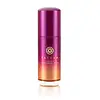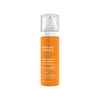What's inside
What's inside
 Key Ingredients
Key Ingredients

 Benefits
Benefits

 Concerns
Concerns

 Ingredients Side-by-side
Ingredients Side-by-side

Water
Skin ConditioningBis-Glyceryl Ascorbate
AntioxidantCamellia Sinensis Leaf
PerfumingPropanediol
SolventButylene Glycol
HumectantGlycerin
HumectantAscorbyl Tetraisopalmitate
AntioxidantAngelica Acutiloba Root Extract
Skin ConditioningCallicarpa Japonica Fruit Extract
Skin ConditioningPrunus Mume Fruit Extract
HumectantCrataegus Cuneata Fruit Extract
Skin ConditioningPyrus Malus Fruit Extract
Skin ConditioningCitrus Paradisi Fruit Extract
Skin ConditioningCitrus Aurantium Dulcis Juice
Skin ConditioningCitrus Limon Juice
Skin ConditioningCitrus Aurantifolia Juice
CleansingGlycyrrhiza Glabra Root Extract
BleachingScutellaria Baicalensis Root Extract
AstringentArtemisia Capillaris Flower Extract
Skin ConditioningMorus Alba Root Extract
BleachingZiziphus Jujuba Fruit Extract
Skin ConditioningSodium Hyaluronate
HumectantLactic Acid
BufferingSodium Citrate
BufferingDipotassium Glycyrrhizate
HumectantAmmonium Acryloyldimethyltaurate/Carboxyethyl Acrylate Crosspolymer
Disodium EDTA
PPG-6-Decyltetradeceth-30
EmulsifyingEthylhexylglycerin
Skin ConditioningPhenoxyethanol
PreservativeWater, Bis-Glyceryl Ascorbate, Camellia Sinensis Leaf, Propanediol, Butylene Glycol, Glycerin, Ascorbyl Tetraisopalmitate, Angelica Acutiloba Root Extract, Callicarpa Japonica Fruit Extract, Prunus Mume Fruit Extract, Crataegus Cuneata Fruit Extract, Pyrus Malus Fruit Extract, Citrus Paradisi Fruit Extract, Citrus Aurantium Dulcis Juice, Citrus Limon Juice, Citrus Aurantifolia Juice, Glycyrrhiza Glabra Root Extract, Scutellaria Baicalensis Root Extract, Artemisia Capillaris Flower Extract, Morus Alba Root Extract, Ziziphus Jujuba Fruit Extract, Sodium Hyaluronate, Lactic Acid, Sodium Citrate, Dipotassium Glycyrrhizate, Ammonium Acryloyldimethyltaurate/Carboxyethyl Acrylate Crosspolymer, Disodium EDTA, PPG-6-Decyltetradeceth-30, Ethylhexylglycerin, Phenoxyethanol
Water
Skin ConditioningTetrahexyldecyl Ascorbate
AntioxidantDimethicone
EmollientGlycerin
HumectantC9-12 Alkane
SolventAscorbyl Glucoside
AntioxidantSilica
AbrasivePyrus Malus Fruit Extract
Skin ConditioningHydrogenated Lecithin
EmulsifyingPolyglyceryl-6 Polyricinoleate
EmulsifyingAcrylates/C10-30 Alkyl Acrylate Crosspolymer
Emulsion StabilisingXanthan Gum
EmulsifyingOryza Sativa Bran Extract
Skin ConditioningHydroxyethyl Acrylate/Sodium Acryloyldimethyl Taurate Copolymer
Emulsion StabilisingCetyl Alcohol
EmollientCaprylyl Glycol
EmollientLysine Carboxymethyl Cysteinate
Skin ConditioningCoco-Caprylate/Caprate
EmollientTocopherol
AntioxidantGlutathione
Sodium Citrate
BufferingSodium Phytate
Hexylene Glycol
EmulsifyingEthylhexylglycerin
Skin ConditioningHelianthus Annuus Seed Extract
Skin ConditioningUrea
BufferingMannitol
HumectantCaprylic/Capric Triglyceride
MaskingSodium PCA
HumectantRosmarinus Officinalis Leaf Extract
AntimicrobialPolysorbate 60
EmulsifyingSorbitan Isostearate
EmulsifyingTrehalose
HumectantAscorbic Acid
AntioxidantGlucose
HumectantVanilla Planifolia Fruit Extract
Skin ConditioningPolyquaternium-51
Skin ConditioningErgothioneine
AntioxidantTriacetin
AntimicrobialSodium Hyaluronate
HumectantPhenoxyethanol
PreservativeWater, Tetrahexyldecyl Ascorbate, Dimethicone, Glycerin, C9-12 Alkane, Ascorbyl Glucoside, Silica, Pyrus Malus Fruit Extract, Hydrogenated Lecithin, Polyglyceryl-6 Polyricinoleate, Acrylates/C10-30 Alkyl Acrylate Crosspolymer, Xanthan Gum, Oryza Sativa Bran Extract, Hydroxyethyl Acrylate/Sodium Acryloyldimethyl Taurate Copolymer, Cetyl Alcohol, Caprylyl Glycol, Lysine Carboxymethyl Cysteinate, Coco-Caprylate/Caprate, Tocopherol, Glutathione, Sodium Citrate, Sodium Phytate, Hexylene Glycol, Ethylhexylglycerin, Helianthus Annuus Seed Extract, Urea, Mannitol, Caprylic/Capric Triglyceride, Sodium PCA, Rosmarinus Officinalis Leaf Extract, Polysorbate 60, Sorbitan Isostearate, Trehalose, Ascorbic Acid, Glucose, Vanilla Planifolia Fruit Extract, Polyquaternium-51, Ergothioneine, Triacetin, Sodium Hyaluronate, Phenoxyethanol
 Reviews
Reviews

Ingredients Explained
These ingredients are found in both products.
Ingredients higher up in an ingredient list are typically present in a larger amount.
Ethylhexylglycerin (we can't pronounce this either) is commonly used as a preservative and skin softener. It is derived from glyceryl.
You might see Ethylhexylglycerin often paired with other preservatives such as phenoxyethanol. Ethylhexylglycerin has been found to increase the effectiveness of these other preservatives.
Glycerin is already naturally found in your skin. It helps moisturize and protect your skin.
A study from 2016 found glycerin to be more effective as a humectant than AHAs and hyaluronic acid.
As a humectant, it helps the skin stay hydrated by pulling moisture to your skin. The low molecular weight of glycerin allows it to pull moisture into the deeper layers of your skin.
Hydrated skin improves your skin barrier; Your skin barrier helps protect against irritants and bacteria.
Glycerin has also been found to have antimicrobial and antiviral properties. Due to these properties, glycerin is often used in wound and burn treatments.
In cosmetics, glycerin is usually derived from plants such as soybean or palm. However, it can also be sourced from animals, such as tallow or animal fat.
This ingredient is organic, colorless, odorless, and non-toxic.
Glycerin is the name for this ingredient in American English. British English uses Glycerol/Glycerine.
Learn more about GlycerinPhenoxyethanol is a preservative that has germicide, antimicrobial, and aromatic properties. Studies show that phenoxyethanol can prevent microbial growth. By itself, it has a scent that is similar to that of a rose.
It's often used in formulations along with Caprylyl Glycol to preserve the shelf life of products.
Pyrus Malus Fruit Extract is extract from Apples. Apples are rich in Vitamin C, sugars, and antioxidants.
The sugar in Apples are humectants and help hydrate the skin. On top of that, apples also contain some acids, such as malic acid. These acids may have a mild exfoliating effect.
Last, the phytochemicals found in apples are strong antioxidants. These antioxidants help with anti-aging as they protect your skin cells against oxidative damage.
Learn more about Pyrus Malus Fruit ExtractSodium Citrate is the sodium salts of citric acid. In skincare, it is used to alter pH levels and acts as a preservative.
Its main functions are to maintain the pH of a product and neutralize metal ions.
The acidity of our skin is maintained by our glands and skin biome; normal pH level of skin is slightly acidic (~4.75-5.5).
Being slightly acidic allows our skin to create an "acid mantle". This acid mantle is a thin barrier that protects our skin from bacteria and contaminants.
Learn more about Sodium CitrateSodium Hyaluronate is hyaluronic acid's salt form. It is commonly derived from the sodium salt of hyaluronic acid.
Like hyaluronic acid, it is great at holding water and acts as a humectant. This makes it a great skin hydrating ingredient.
Sodium Hyaluronate is naturally occurring in our bodies and is mostly found in eye fluid and joints.
These are some other common types of Hyaluronic Acid:
Learn more about Sodium HyaluronateWater. It's the most common cosmetic ingredient of all. You'll usually see it at the top of ingredient lists, meaning that it makes up the largest part of the product.
So why is it so popular? Water most often acts as a solvent - this means that it helps dissolve other ingredients into the formulation.
You'll also recognize water as that liquid we all need to stay alive. If you see this, drink a glass of water. Stay hydrated!
Learn more about Water